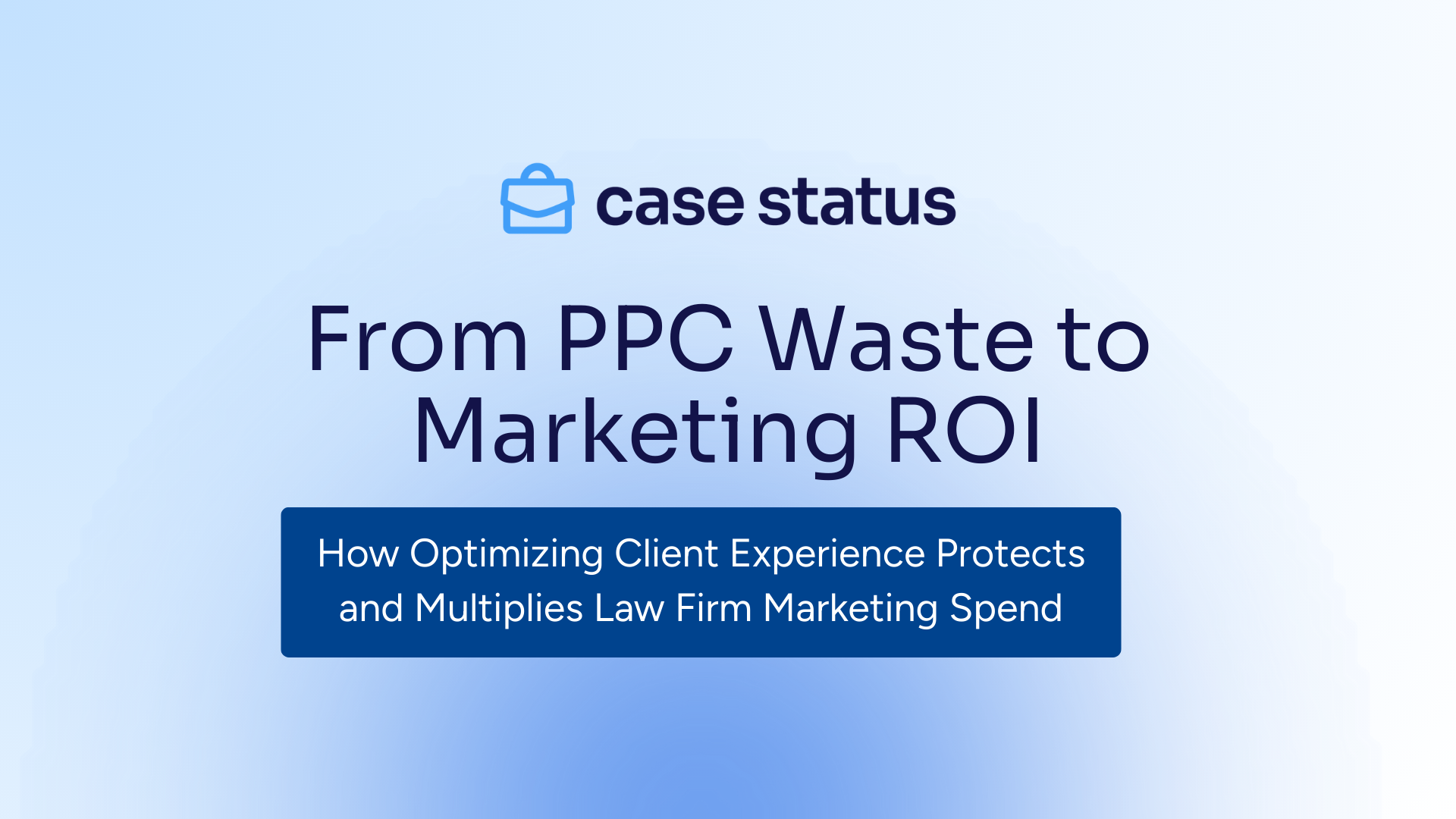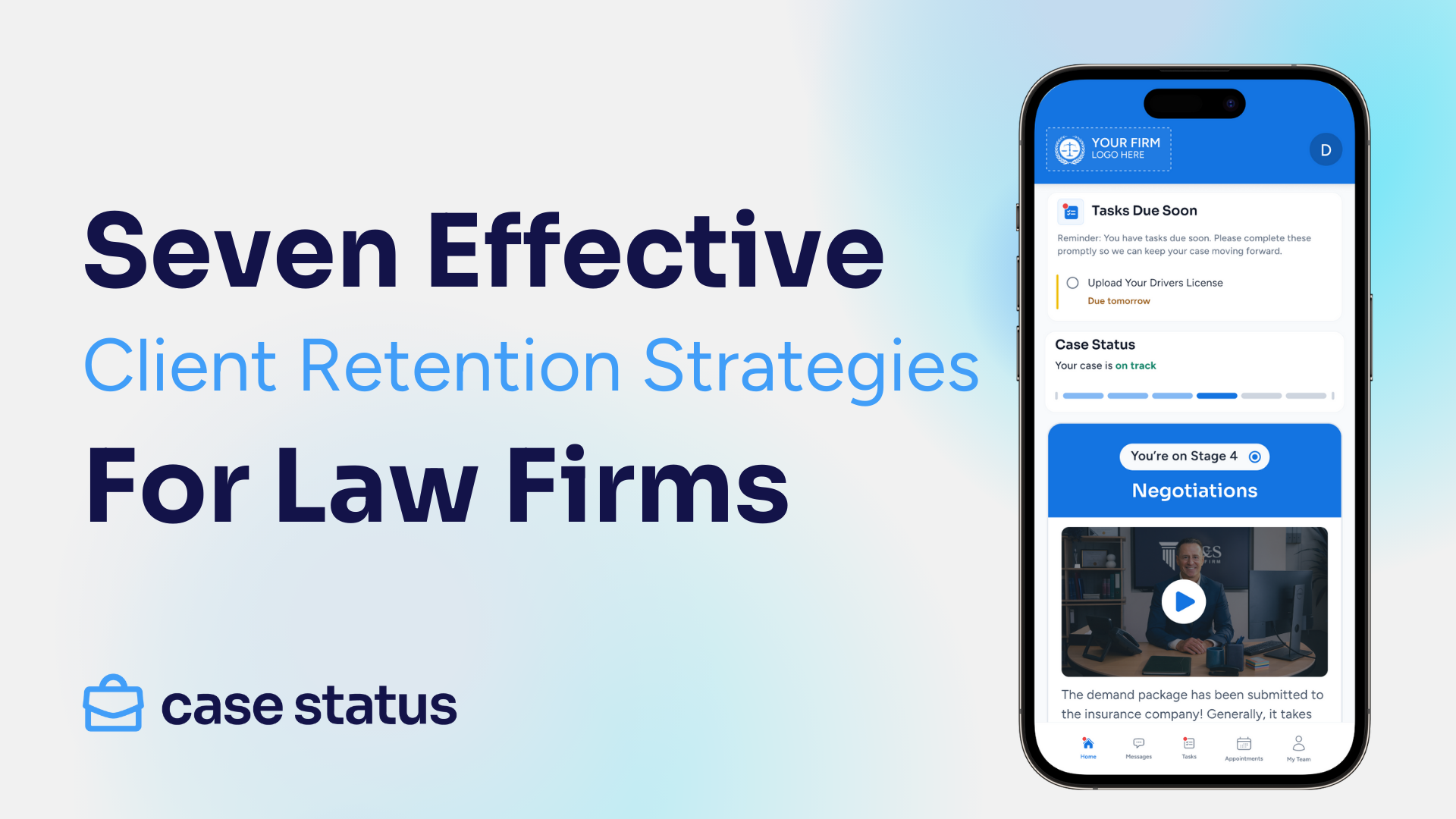
Communication is at the center of every successful law practice. Clients expect timely notification of case developments, clear explanations of legal jargon, and options for resolving their issues. Attorneys must also be able to effectively communicate with other parties involved in the case, such as opposing counsel, judges, and court personnel.
While mistakes can be afforded in other professions, quality in the legal field is uncompromisable. Today's lawyers have the responsibility of ensuring that everything they communicate, whether written or verbal, is accurate and professional. That's in addition to the job of being a lawyer itself - researching and analyzing laws, preparing legal documents, representing clients in court, and providing counsel.
It's estimated that between 30 and 40% of a case's time is spent on some form of communication - that's a significant chunk of time that could be better allocated to other important tasks. And with the increasing complexity and volume of legal work, managing communication is becoming more challenging than ever.
Thankfully, advancements in technology have brought us a solution to this problem - artificial intelligence (AI). Honing the ability to process massive amounts of data and make decisions based on it, AI can revolutionize the way lawyers communicate.
Keep reading to learn more about the history, context, and application of new technological innovations like this one in the legal field and how AI stands to transform the future of communication in the legal field for the better.
A Timeline of How Legal Communications Have Changed In the Past 20 Years
Legal communications, much like society's standards of communication as a whole, have evolved drastically over the years. The methods we use to get messages across in both personal and professional capacities are determined by whatever technology is the most popular and accessible at a given time.
Legal Communications Two Decades Ago: Inefficient
For example, lawyers 20 years ago relied heavily on sending letters through the mail or communicating in person to convey important legal information. Fax machines were commonly used for urgent matters, although with some technical difficulties and limitations.
Veteran lawyers can tell you stories of rushing to the post office before it closed or frantically trying to fix a paper jam in the fax machine while desperately trying not to miss an important deadline. Paper-based documents were and always will be easy to physically misplace or damage, threatening the security and integrity of legal information.
To make matters even more complicated, there ironically wasn't enough legal framework in place to keep the use of digital communications feasible for law firms until the turn of the millennia. Anyone operating in the field knows they have an obligation to maintain client confidentiality and protect sensitive information - two things legacy systems can't always guarantee.
In 2000, the U.S. government enacted the Electronic Signatures in Global and National Commerce Act, which allowed electronic signatures to hold the same legal weight as written ones. It would take many more years of development and standardization for the legal industry to fully transition to the digital world.
Legal Communications Up Until Recently: Somewhat Efficient
People put up with the redundancies of their communication systems two decades ago because there were no better solutions available to them. 'This is as efficient as you get' was the general mindset. But with the advent of cloud computing, mobile devices, and other advancements in technology, law firms have finally been able to modernize their communication systems.
First, telephones and mailed letters turned into emails and instant messaging. This allowed for faster communication and easier access to documents and information. Then came the shift towards cloud storage, which allowed for secure and easily accessible storage of sensitive data.
The tides have changed to form a new landscape in which fax is obsolete and paper is a thing of the past. With electronic signatures, documents can be signed and shared instantly, reducing the need for physical copies to be mailed or hand-delivered.
The COVID-19 pandemic only accelerated the legal industry's digitization by effectively forcing lawyers to rely on digital means for communication and document storage. With most offices closed and the need to maintain social distancing, law firms had to find good solutions and find them fast if they were to continue servicing their clients. Now, so many firms run on advanced case management systems that it's a competitive disadvantage to not use one in your own practice.
Legal Communications Now: More Efficient Than Ever
Despite the material improvements the legal industry has made in advancing its communications over the past two decades, barriers to productivity still remain. Prime among them is the amount of time lawyers still spend on mundane tasks like document organization, printing, and scanning. Even communication itself can be a drain on time when you have a growing mountain of client messages to respond to.
Artificial Intelligence's break into the mainstream presents a new opportunity to change lawyers' lives for the better. Generative AI in particular has the potential to revolutionize legal document preparation and organization, freeing up valuable time for lawyers to focus on more complex and important tasks.
How Generative AI Delivers Value to the Legal Industry
Generative AI works by analyzing patterns in existing documents and using that data to generate new documents with similar characteristics. This is accomplished through machine learning algorithms that are trained on a large dataset of existing legal documents. The more data the AI has, the better it can understand and mimic patterns in language and structure.
For example, if a lawyer needs to draft a contract for a new client, they can input the necessary details into the AI system such as names, dates, and specific terms. The generative AI will then use its trained knowledge to create a draft document that follows similar patterns and language used in other contracts. The lawyer can then review and make any necessary changes before finalizing the document.
Making AI a Standard Tool In the Legal Industry
Every new technology has its own barriers to full adoption, and in the case of AI, that's autonomy. Can we really trust language models to handle sensitive, private, and potentially life-changing work like we do lawyers? The answer is and will likely always be no. Experts believe that AI will instead become a key tool for those in the legal field - one that, like the technology before it, will grow alongside its users.
Consider self-driving cars as a comparable issue. We've reached a point of technological development where fully delegating responsibilities to automated vehicles is possible but still recognized as impractical. With such high stakes both on the roads and in courtrooms, maintaining human involvement on some level is the best way forward.
Tools need to be developed by experts who understand the nuances of the legal field and the potential implications AI can have on legal practices. Back to the car analogy, we must design systems with multiple safety measures in place to avoid potential accidents. Autopilot offers the best of both worlds, combining advanced technology with human judgment and control.
Enhanced Autopilot In Client Communications With CaseyAI
Our new solution to client communications, CaseyAI, is revolutionizing the legal industry by delivering a practical blend of advanced technology and human control. With it, you aren't delegating everything to AI, but rather collaborating with the technology to enhance your efficiency and productivity.
One of the biggest benefits comes in client communication. CaseyAI is built to be an advanced autopilot for your client communication. It analyzes every message, email, and document related to a case or client and generates a draft response in seconds within the Case Status portal. This not only saves you time but also ensures that all responses are consistent and accurate.
Even better, the more you use CaseyAI, the smarter it gets. Its machine learning capabilities enable it to learn from your communication style and preferences, adapting its responses accordingly.
But don't worry about losing the human touch - CaseyAI still allows for human control and input. You have the final say in what responses are sent out to clients.
Why CaseyAI Is Unlike Anything You've Seen or Used Before
CaseyAI isn't like the conversational chatbots through which many of us were first introduced to Artificial Intelligence. Its inner workings are more complex - and its capabilities much broader - thanks to the use of Retrieval-Augmented Generation (RAG) technology.
A performance-driven concept first explored in the 1970s, this technique bolsters the accuracy and reliability of generative AI tools by bridging gaps between natural language processing and information retrieval.
How Does Retrieval-Augmented Generation (RAG) Work?
Large Language Models use neural networks to generate text based on a given prompt or input. While these models have been quite successful in generating coherent and relevant text, they often struggle with factual accuracy and context sensitivity. The quality of an AI tool's output is ultimately a question of the number of examples it has seen during its training. Models with more exposure to diverse datasets are better equipped to produce more relevant responses.
Traditional parameter-based generation creates challenges in industry-specific applications like law because the questions users have for a model are often much more complex than a general knowledge query. For instance, when a lawyer asks if it's legal to fire an employee, the model must consider relevant employment laws and regulations in order to provide a reliable answer.
RAG is a novel approach to large language model design that combines the strengths of traditional parameter-based generation with the inclusion of relevant information from external sources. Outputs are derived through a combination of both the model's internal knowledge and information retrieved from a pre-selected set of relevant documents.
This method allows for better contextual understanding and accuracy in generating text, making it particularly useful in industries that require specialized knowledge like law, medicine, and finance. Organizations with the right in-house expertise can theoretically build and deploy a model trained on their own internal, circumstance-specific needs.
Putting RAG Into Practice With CaseyAI
While RAG represents an incredibly valuable opportunity for law firms, those that are time and resource-strapped have yet to fully capitalize on its potential. Building an effective RAG model requires both significant computing power and a vast amount of data to train on, which can be costly and time-consuming.
CaseyAI is putting the power of advanced generative tools within reach for law firms of all sizes. Our turnkey solution has been designed with the unique needs of the legal industry in mind, providing firms with a powerful RAG model that can be easily customized to their specific practice areas and document types.
In the context of your every day workflow, this means automated assistance with responding to client messages and inquiries. Imagine a world where you could generate multiple messages based on the specific needs of each client and case with nothing more than a click of a button. The time-saving and performance-enhancing potential of this tool is limitless.
CaseyAI can be configured to consult a range of in-house data sources, including website pages, technical documentation, policy manuals, videos, activity logs, and more. Its innate ability to foster understanding and learning from these resources allows CaseyAI to provide timely, accurate, and helpful responses that no regular GPT tool can come anywhere close to matching.
Similar to Tesla's Lane Control feature that keeps the car in its lane and adjusts accordingly, CaseyAI's Enhanced Autopilot ensures your communications stay on track. And just like innovations of the past, it's sure to redefine how lawyers do their work over the coming years. Can you afford to miss out on this cutting-edge technology? Don't get left behind - try CaseyAI today and experience the future of legal work for yourself.



